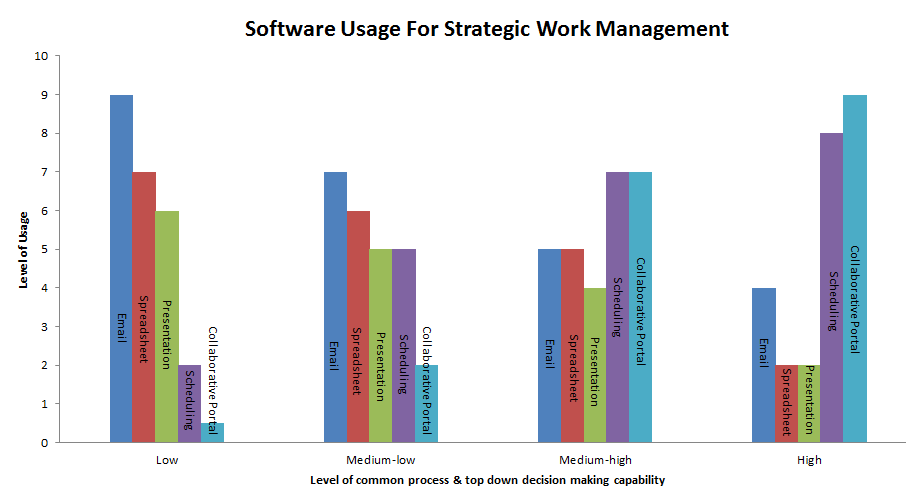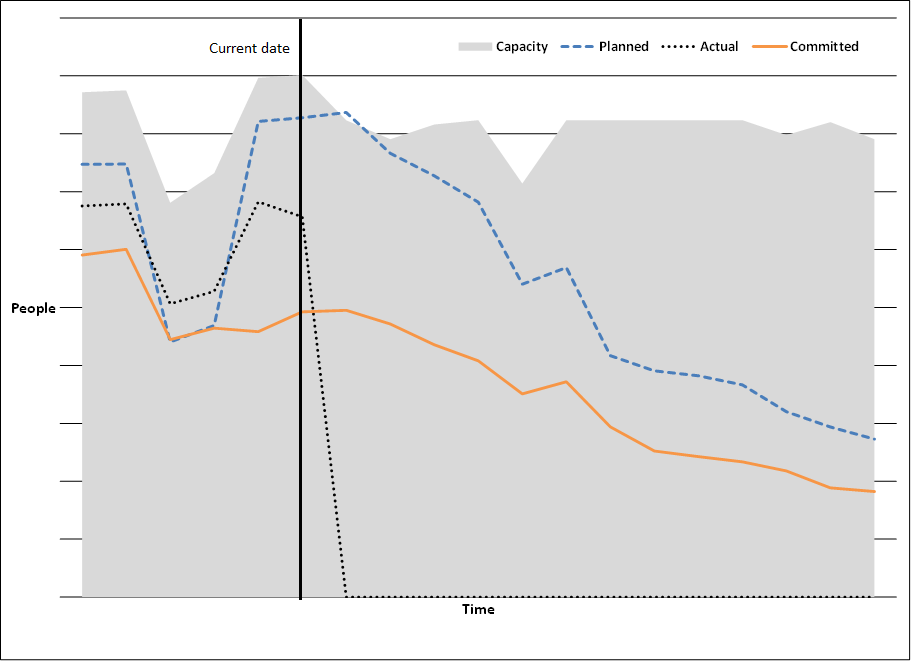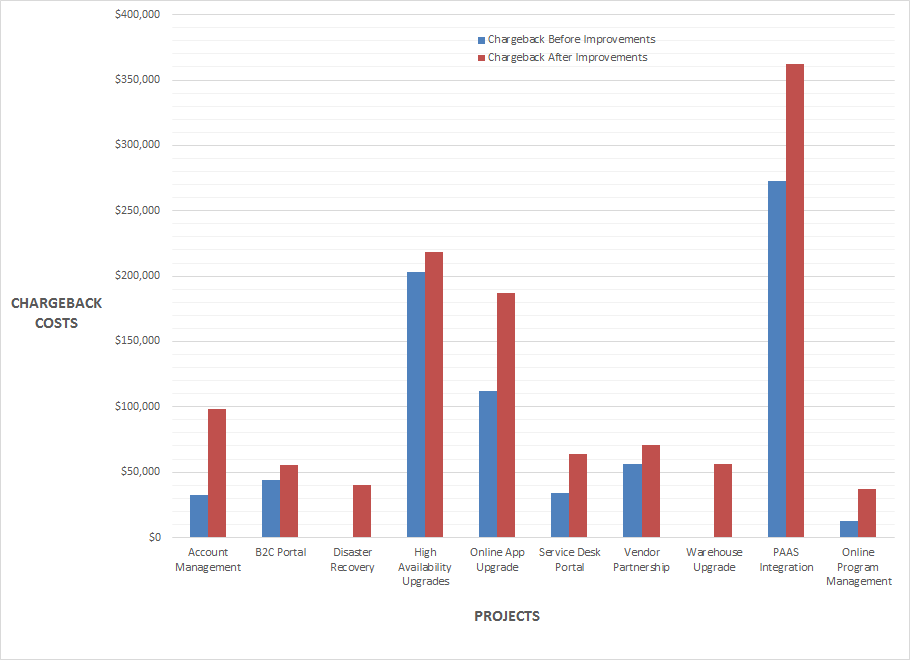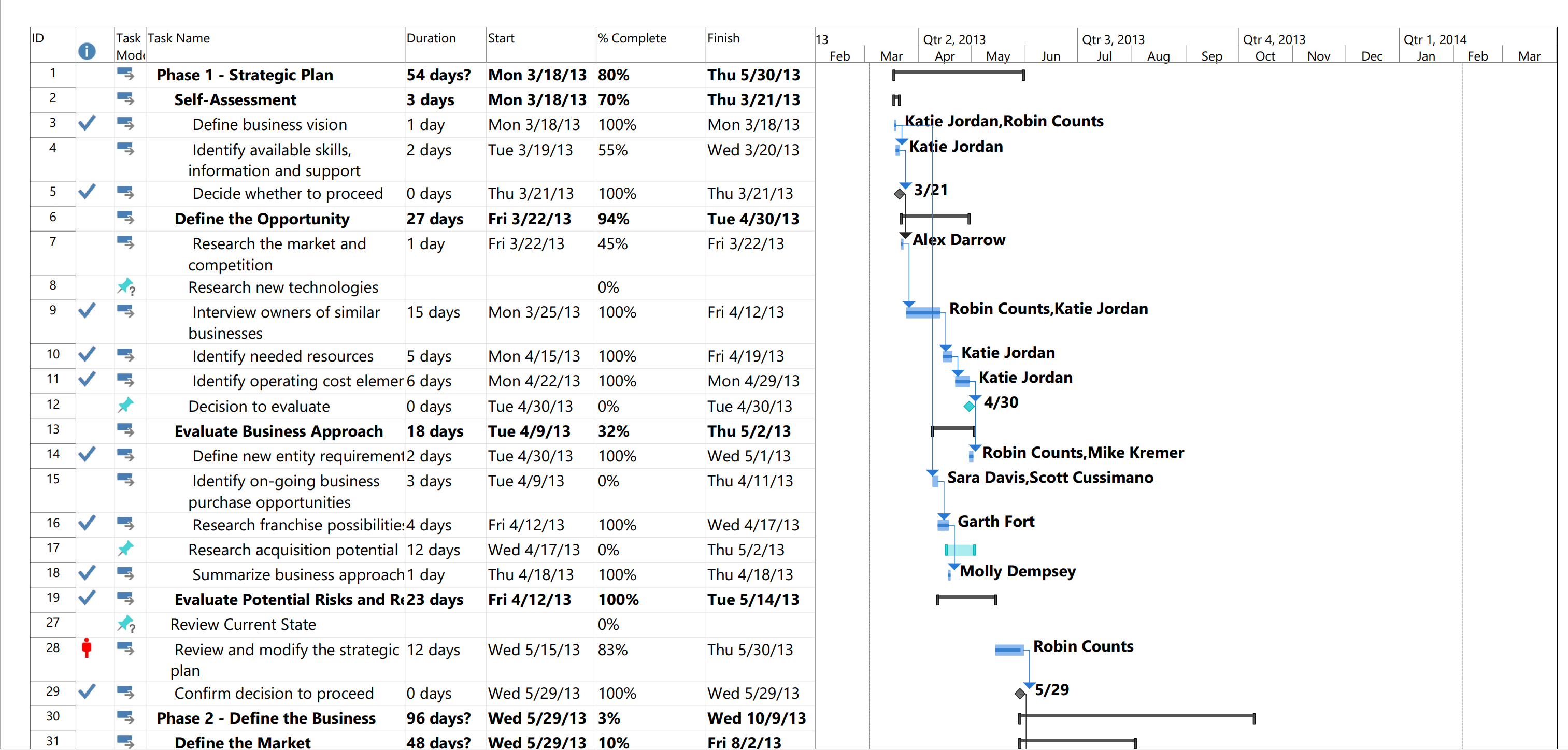Many businesses struggle with the process of managing strategic work, also known as project or non-operational work. These issues are evident in all phases:
- Decision making around strategic investments by executives
- Communication of strategic direction to managers and workers
- Assigning resources to project work
- Articulating and collecting progress status on project work
- Reporting and monitoring on ongoing project investments
This article provides insight into typical scenarios for strategic work management based on the author’s many years of direct interaction with companies around the world. Some high level observations:
- Although strategic or project work accounts for the vast majority of discretionary spending in any given company, consistent accountable process and real time information need to support decision making in many companies is little or none
- Many businesses invest in software tools that could support a much higher degree of accountability and efficiency, but those tools are used to a very small degree or not at all
- The desire to implement and enforce better work management processes exists at many levels in a typical organization, but are rarely or inconsistently supported by the executives that could turn such initiatives into reality
In larger companies, it is normal to see a wide variety of process and capabilities from division to division and group to group; it is unusual for a top-down project methodology to be followed enterprise-wide. In medium and smaller businesses more consistency can be found, but the specialized disciplines necessary to create and maintain significant common process can be hard to find.
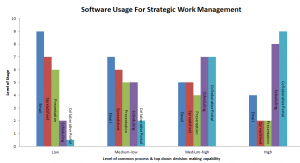
The following table and chart describe a scale of process capability from low to high, and some of the typical characteristics associated with each level. Anecdotal data has been gathered through hundreds of customer interactions in 15 countries. In particular, categories of software are called out and the degree to which each is used is a good indicator of capability for a given division or company. Note that these descriptions are generalizations and a wide variety of deviation may occur. Following the table and chart are more detailed descriptions of each level.
|
Amount of common process & top down decision making capability
|
Low or none
|
Medium-low
|
Medium-high
|
High
|
|
Work process characteristics
|
|
|
|
|
|
Benefits from the Cloud
|
Email collaboration
|
Shared lists: tasks, risks, issues
Shared document repository
Instant messaging
Virtual meetings
Threaded discussions
Wiki
|
Publish reports to portal
Synchronize project schedules with portal
Collect work status through portal
Some reporting
|
Top-down process control
Structured and ad-hoc reporting
Role based dashboards
|
|
Software usage specifically for project work management
|
Email – High
Spreadsheet – High
Presentation – Medium
Project Scheduling – Low
Collaborative Portal – None
|
Email – High
Spreadsheet – High
Presentation – Medium
Project Scheduling – Medium
Collaborative Portal – Low
|
Email – Medium
Spreadsheet – Medium
Presentation – Medium
Project Scheduling – High
Collaborative Portal – High
|
Email – Low
Spreadsheet – Low
Presentation – Low
Project Scheduling – High
Collaborative Portal – High
|
Low Common Process
The largest numbers of companies fall into the low level of common process. Email is the main tool used to manage work in all phases: work planning, task assignments and status reporting. Spreadsheets are generally used in an ad-hoc manner for task and financial management, with common formats or templates used less that 25% of the time. The primary tool used for reporting is presentation software; the content is mostly narrative rather than metrics-based, and templates are used for less than 50% of presentations. In-person meetings are the primary method for communication of responsibilities as well as gathering updates of status. Project scheduling software may be used occasionally for very large projects.
Resources focused on strategic work can often spend more than 30% of normal work hours in meetings, which leads to either lower productivity or lots of overtime and low job satisfaction. As business processes are largely ad-hoc, there tends to be no motivation to capture or analyze process using Business Process Management tools or methodology.
Medium-low Common Process
Email remains the core for communication around project work. Spreadsheets are more structured and are used more often for semi-structured tasks lists; templates are now used more for than 1/3 of the spreadsheets. The collaboration portal is sometimes used, generally as a repository for project related documents. This usage of the portal makes a small but perceptible dent in the number and length of required meetings, freeing up more time for productive work.
Medium-high Common Process
Although there are relatively few companies at this level of process, it is the most rapidly growing group and therefore the focus of much attention from the work management industry. Use of the collaboration portal has now exceeded the use of email for managing project work. Task lists are maintained there, as well as lists containing other project related data. Project teams come to the portal regularly to understand both their own responsibilities as well as those of the extended team. In many cases reporting, in the form of spreadsheets, charts and even dashboards can be found in the portal, significantly reducing the need for meetings and creating of presentations.
High Common Process
The elusive goal of many Project Management Office managers, this is where a true enterprise project management process and solution are used. The Enterprise Project Portfolio Management portal is the center for strategic decision making, project work management and resource management. Dashboards driven by sophisticated business intelligence capabilities all but eliminate the need for spreadsheets or presentations. In many cases, project work time is collected and used along with task status to understand actual spend, progress and estimate to complete. Predictable deliverable quality, completion schedule and cost become the norm rather than the exception.

